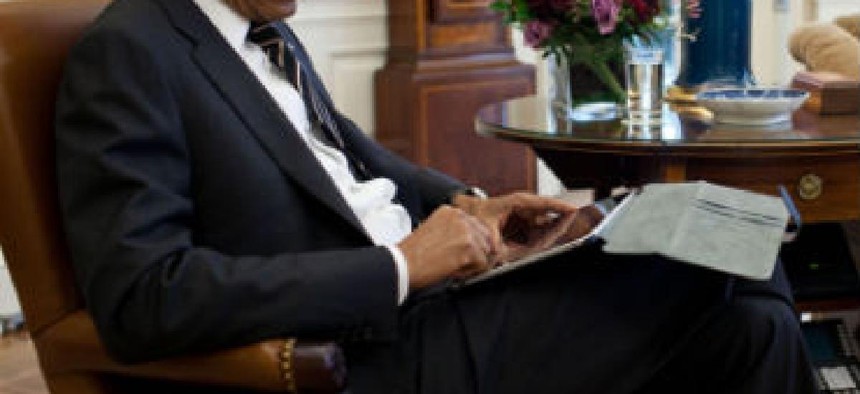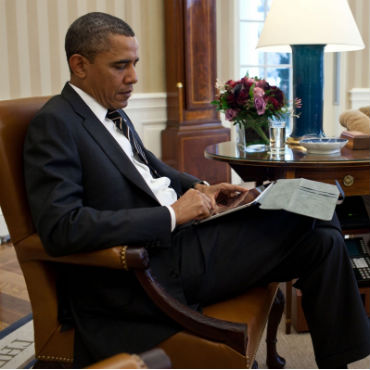POTUS social media to reset with new administration

President Obama's Facebook, Twitter and Instagram posts will follow the exiting leader out of the Oval Office, leaving a blank slate for his successor.

On Jan. 20, 2017, a new president will be sworn into office. Aside from the pomp and circumstance of the inauguration, that day will mark the culmination of a long transition process that includes the mundane collection of records from the previous administration and clearing the decks (and file cabinets and desk drawers) for the next administration.
In the Digital Age, that also means archiving email, websites and, in the case of President Barack Obama, the many social media accounts linked to the chief executive, including Twitter, Facebook, Instagram and Snapchat.
Philip Droege, who has led the White House Office of Records Management since 2004, said the goal is to have the accounts that belong to the White House essentially cleared out by 11:59 a.m. on Inauguration Day. So visitor to the @POTUS Twitter feed during the swearing-in ceremony might see a blank page, however briefly. And users scrolling back won't see tweets from Obama.
Some version of the account will be archived and handed off to the National Archives and Records Administration for eventual use by Obama's presidential library.
The transition will require some level of customization and coordination with the social media companies. Details were not immediately available on how it will work.
Droege said Obama and his staff might continue to post tweets, Instagram photos and other social media updates from post-presidential accounts, which will have some continuity with his presidential accounts. Similarly, the Obama-era WhiteHouse.gov website will be archived and remain accessible through NARA.
"It's the first time we had to deal with it," Droege said at the Digital Government Institute's 930gov conference on Aug. 24. "All the [Obama] data goes to the Archives. I have complete confidence in the National Archives that at 12:01 on Jan. 20, or soon thereafter, we'll be able to access the White House website that was the Obama website, that all that content is still there."
Electronic archiving is a small part of the overall responsibility of preparing for a transition, Droege said. Presidents, even the digitally savvy Obama, get their material mostly in paper form. Most of what the White House Records Office will ship to NARA is paper. And the effort begins to accelerate in the last year of a presidency, Droege added.
Because the White House falls under the jurisdiction of the Presidential Records Act, a separate statutory framework from the Federal Records Act, the decisions of what to keep are pretty simple.
"We just keep everything," Droege said.
Changes to the Presidential Records Act make it easier for White House records managers to stay ahead of the game. They can ship boxes of paper records to NARA ahead of the transition while retaining control of the material. NARA is subject to the Freedom of Information Act; the White House is not. The 2014 updates to the records law make it explicit that the "courtesy storage" NARA had typically extended to White House records was permitted, with the White House retaining control.
Although records staffers serve at the pleasure of the president, the jobs are typically filled by career government employees, which Droege said provides valuable continuity.
His advice to the next president: "Make sure you keep and rely on the career staff, and retain them."
NEXT STORY: Future-readying the federal workforce



